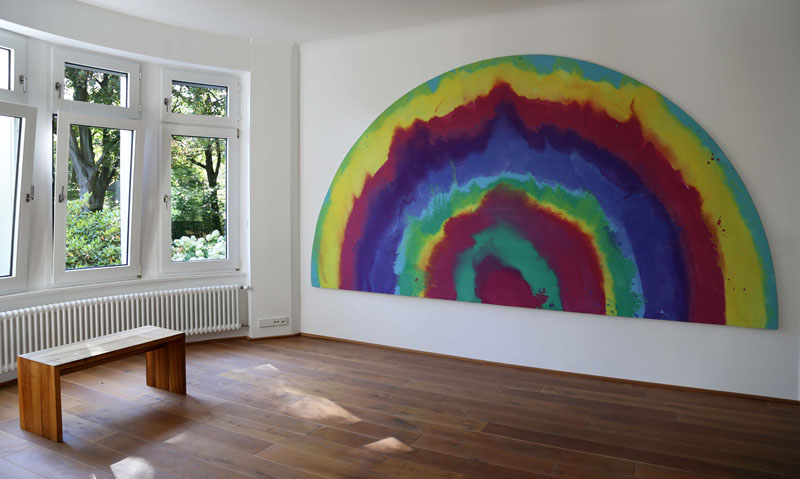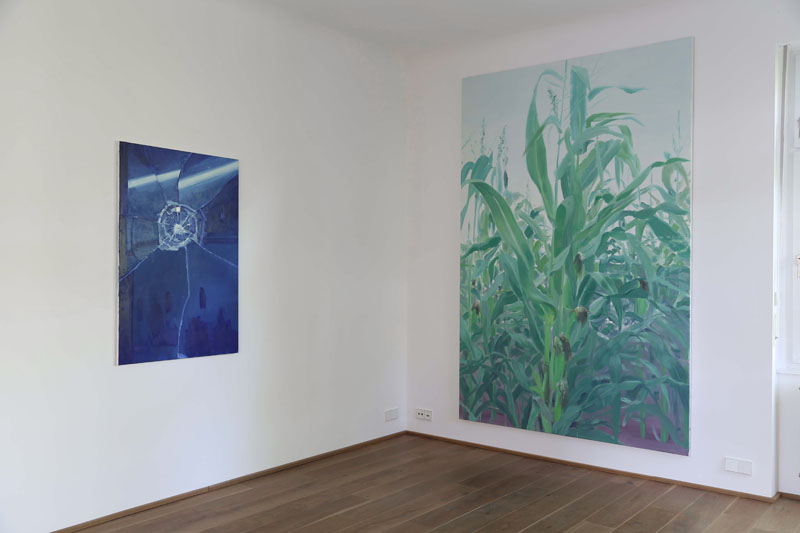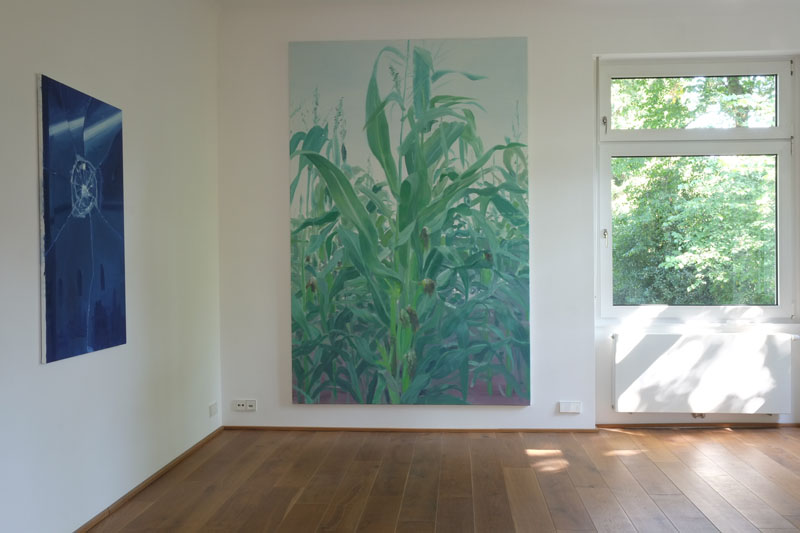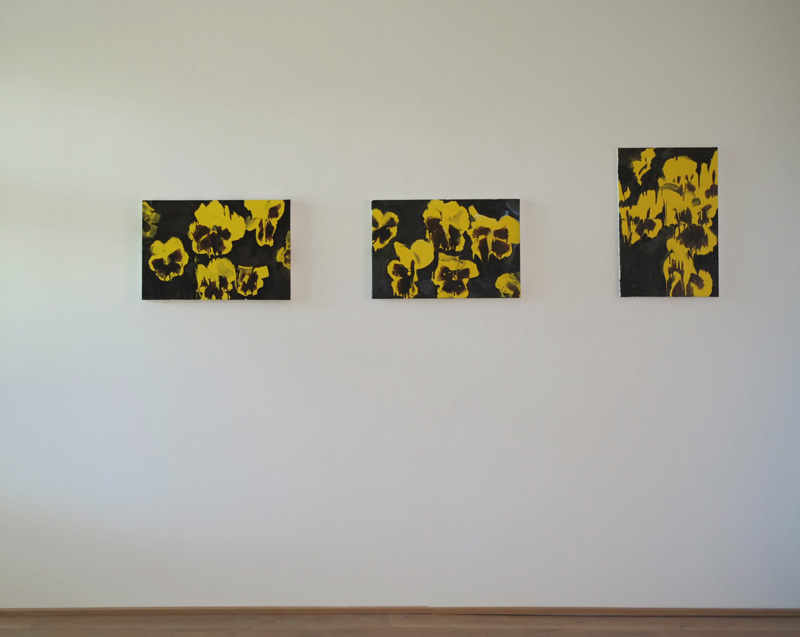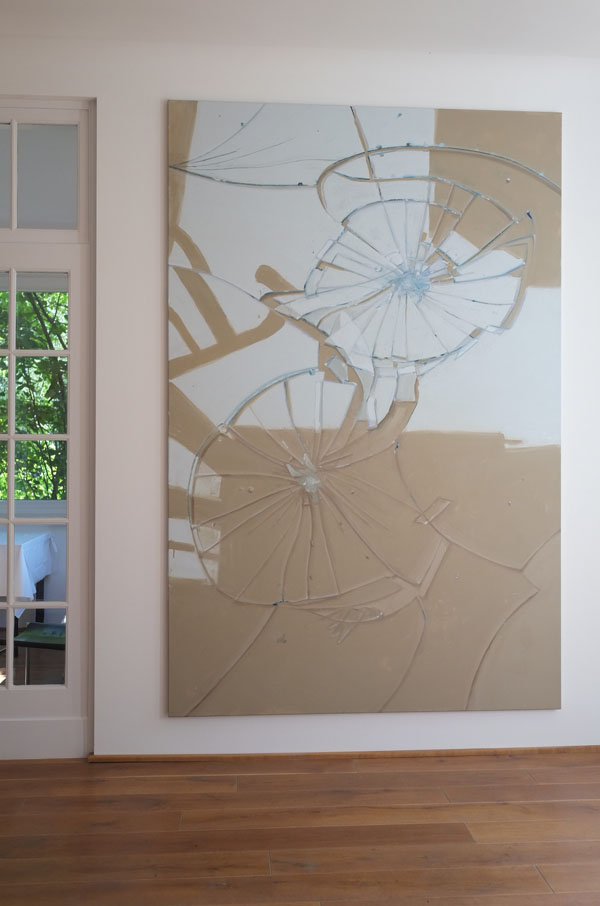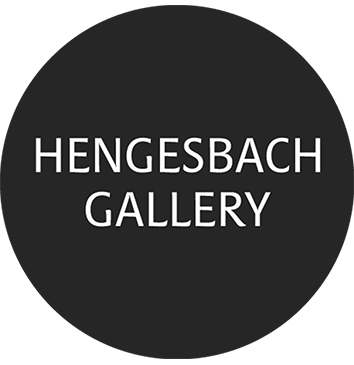Markus Willeke
September 5 – October 23, 2016
Markus Willeke is a painter who embraces both thematic and painterly challenges. Thematically, he is drawn to the reversals of life’s movements—where, for instance, an event full of motion suddenly turns into unexpected rigidity, or conversely, where stiffness transforms into a different kind of dynamism. These abrupt contrasts can often only be experienced visually or on a subliminal level. If one tried to capture them in words, they would have to be formulated as contradictions. And his motifs demand painterly approaches for which there are no ready-made formulas. This becomes especially evident in his exploration of the fluidity and efficacy of color. Willeke repeatedly places himself in situations where he must develop a varying degree of control over the painting process. He makes decisions about color combinations and contrasts that are unexpected. Since unresolved painterly questions fuel his search and engagement with motifs, paintings for him are always an open field of research.
In choosing themes that explore the turning points in our lives, Willeke focuses on the fleeting, the transient, the elusive, the hovering. A broken pane of glass does not only signify disorder—it also opens up new lines of freedom; the surface becomes an open map of unexpected densities and new paths leading to the periphery. On such an unstable surface, this leads to unpredictable reflections of light and dark. In these new structures, the momentary, the instantaneous reveals itself. These evade temporal sequence, the narrative of time, and contradict what images often seem to serve: the halting of our transience. Instead, Willeke’s paintings evoke lightness or flickering. They condense moments, create a sense of being captivated. The sudden emergence of novel vitality—the immediate, striking presence of his motifs—conceals the fact that he is deeply engaged with fundamental questions of painting: What is a painterly surface? How can a pictorial ground release painterly form? What visual assertions are embedded in the development of contrasting painterly forms?
In our exhibition, he has explored four thematic areas, each touching on the fundamental self-understanding of painting: the self-unfolding of color from its natural refraction, the integrity of surfaces, the seemingly simplest painterly gestures, and the relationship between painterly mark and pictorial ground. His motifs include: rainbows, shattered panes of glass, childlike finger paintings on wet windows, and the unfolding of vegetative bodies.
The phenomenon of the rainbow is a refraction of light, which—like a prism—splits white light into its color spectrum (its different electromagnetic waves). These waves are reflected at different angles depending on the color, appearing side by side as a result. In this way, the color composition of white light becomes visible. A rainbow in the sky arises when sunlight refracts through the back surfaces of individual raindrops during a shower. A rainbow in an oil puddle, however, is formed by the refraction of light at the boundary between oil and water.
Markus Willeke uses the latter phenomenon as a self-referential motif in painting. Oil is not only the preferred binding medium in painting; a large portion of paint pigments is also derived from petroleum. In this sense, the rainbow in a droplet of oil renders the full potential of the painting medium visible: the medium of color brings itself into view as painted color in its own self-differentiation. Unlike a sky rainbow with its orderly separation of hues, the rainbow in oil enters into shimmering interactions—into a swirl of mixing and motion. Willeke softens the brittleness and sharpness of thinned oil paint, initiates its seemingly uncontrolled breakout into a new dynamism, while still preserving the radiance and purity of the colors.
The appearance of the color spectrum in a semicircle visually mutates into the act of free unfolding—like a sunrise with its release of light and warmth, a revelation of life on the horizon of the sky. A shattered pane of glass, on the other hand, is a symbol of the desire for destruction and the decay of linear order. It also represents the impairment of clear vision. As a painted motif, it challenges our sense of compositional balance and proportion, while also posing a technical challenge: the sharpness of a shattered pane must be conveyed sharply in paint—not cautiously or in fragments, but quickly and decisively.
This painterly challenge is intensified by the fact that glass, as a transparent material, is hardly paintable. Thus, the invisible requires a background. In its broken state, the view through is clouded by fine splinters; at the same time, the flat surface loses its regularity: the individual shards no longer lie exactly in one plane. This results in varying light reflections depending on how each shard is oriented toward the light. The shattered surface thus dissolves into color fields—some showing the background’s hue, others reflecting bright light. The sharpness and injuriousness of the individual shards is transformed in painting into something alive—a powerful web of life from which light and color emanate, imbuing the shattered surface with new meaning.
Children’s finger paintings on wet, cold car windows are not attempts to create impressive images. They are provocations or playful jibes made in the face of their imminent disappearance. Nevertheless, they require a certain dexterity—every stroke and gesture must be precise, and there must not be too much of it. The work only succeeds if, in its lightness, it finds the right balance across the surface of the glass. The rest of its effect is owed to external conditions: the transparency and curvature of the window, and the way light dances differently on the moist droplets. In painting, this environment must be recreated, and the feeling of a quick, wet finger must not get lost in the much more viscous paint. Willeke’s motif in the exhibition is skulls. In their stark outline, they evoke death, but in their sparkling light reflections, the dynamic motion, and the spiraling of an atmospheric space out of the darkness of an interior, they simultaneously become a dance of joy.
When viewing paintings, we often focus on the motif and ignore the fact that it emerges from and remains tied to its surroundings—the pictorial ground. This is not merely the unity of the entire picture surface, but also what the individual figure pushes against or rises from. In Willeke’s work, the ground is a shimmering glow, from which the thick foliage of a corn plant rises—imposing and obscene. In its transformation into impenetrability, it becomes a ground itself, which in turn releases the light as an open form. Or the pictorial ground radiates as the bright yellow of a pansy’s blossom, which seems to resist the darkness of its leaf’s dullness and of its surroundings. Is the ground not also the darkness, and does the blooming not visually carry its own decay within it?
Installation Views
